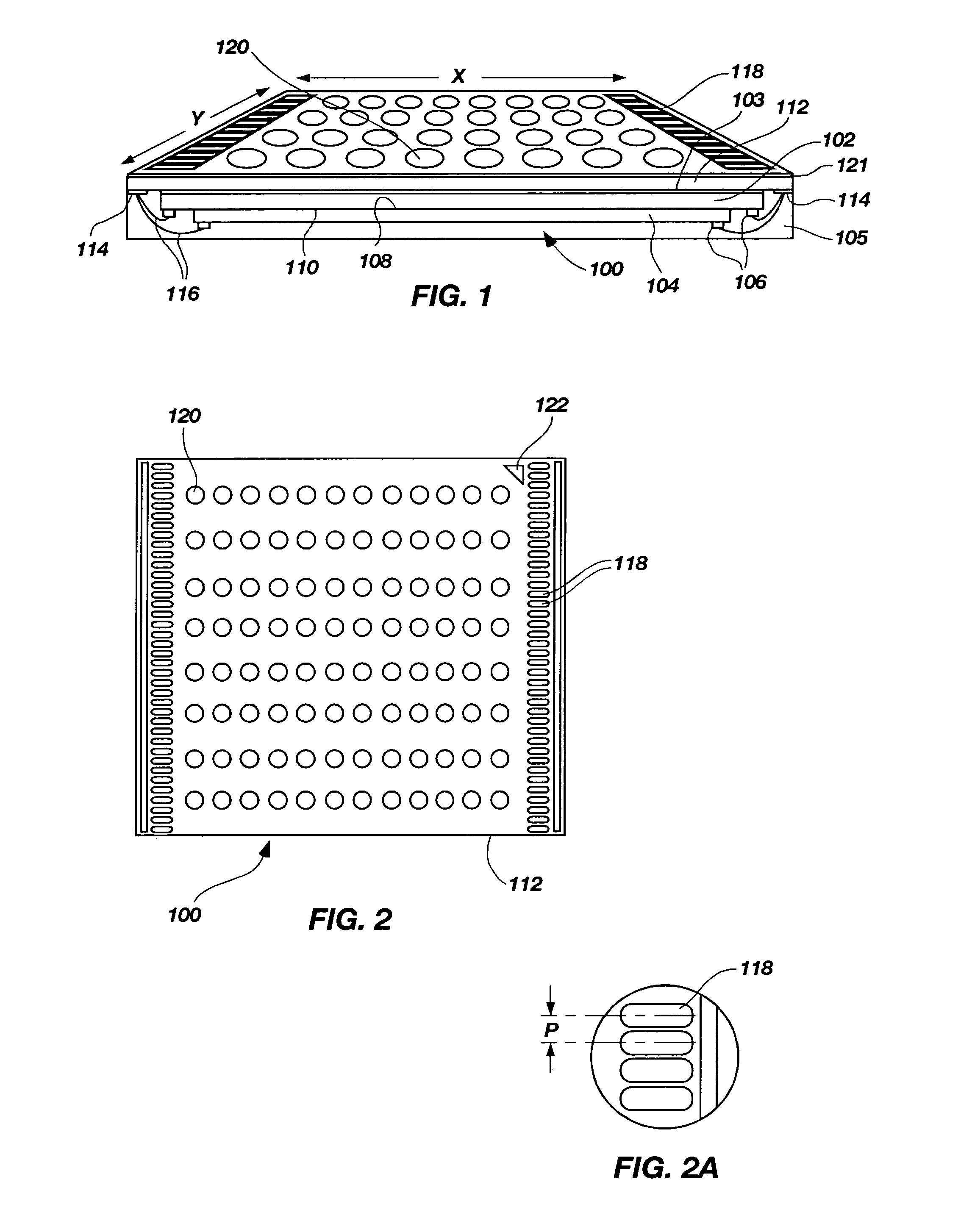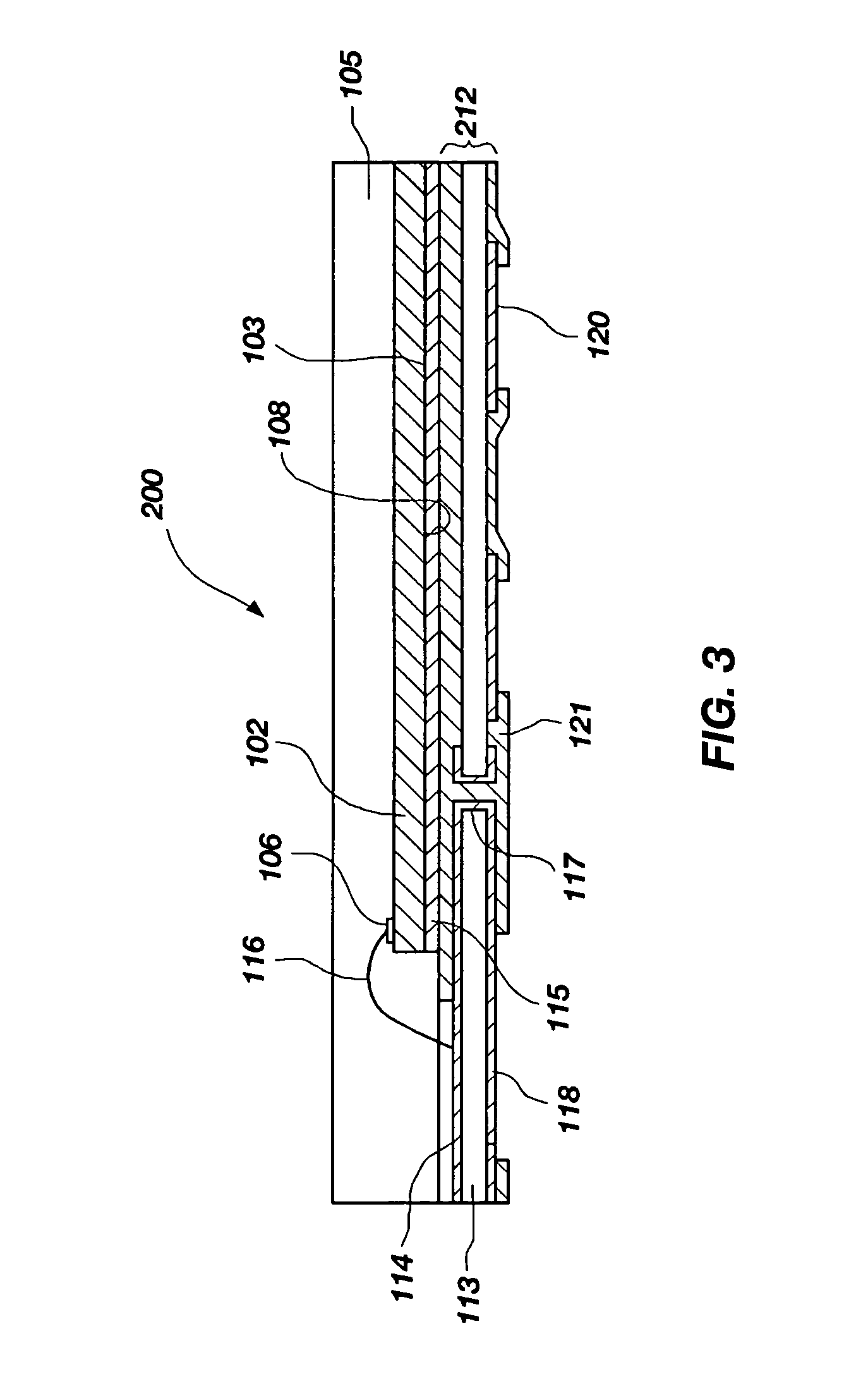Land grid array semiconductor device packages
a technology of semiconductor devices and capillaries, applied in semiconductor devices, semiconductor/solid-state device testing/measurement, semiconductor/solid-state device details, etc., can solve the problems of difficult, if not impossible in some circumstances, to place the inner end of the lead finger of the lead frame in close proximity to the bond pad, and the capillary head of the wire bonding capillary head cannot be accurately placed to avoid contact with the adjacent bond pad, so as to facilitate the connection of other components or wire bond
- Summary
- Abstract
- Description
- Claims
- Application Information
AI Technical Summary
Benefits of technology
Problems solved by technology
Method used
Image
Examples
Embodiment Construction
[0026]In the description which follows, like features and elements have been identified by the same or similar reference numerals for ease of identification and enhanced understanding of the disclosure hereof. Such identification is by way of convenience for the reader only, however, and is not limiting of the present invention or an implication that features and elements of various components and embodiments identified by like reference numerals are identical or constrained to identical functions.
[0027]Referring now to FIG. 1 of the invention, land grid array package 100 comprises first and second semiconductor dice 102 and 104, each of which bears bond pads 106 adjacent opposing peripheral edges thereof, according to a selected pinout design, which may be customized using a redistribution layer to relocated inner lead bond locations to more peripheral, outer lead bond locations of bond pads 106. As can be seen in FIG. 1, semiconductor die 104 is slightly shorter in length than sem...
PUM
 Login to View More
Login to View More Abstract
Description
Claims
Application Information
 Login to View More
Login to View More - R&D
- Intellectual Property
- Life Sciences
- Materials
- Tech Scout
- Unparalleled Data Quality
- Higher Quality Content
- 60% Fewer Hallucinations
Browse by: Latest US Patents, China's latest patents, Technical Efficacy Thesaurus, Application Domain, Technology Topic, Popular Technical Reports.
© 2025 PatSnap. All rights reserved.Legal|Privacy policy|Modern Slavery Act Transparency Statement|Sitemap|About US| Contact US: help@patsnap.com



